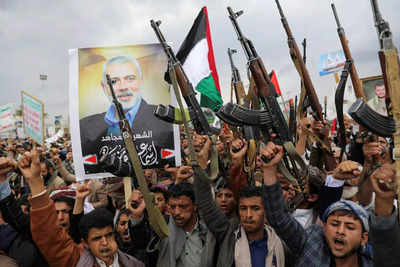
Israel’s evacuation orders come as the military intensifies its operations in northern Gaza. The decision to evacuate additional areas is part of what Israeli officials describe as a strategy to minimize civilian casualties while continuing to target Hamas militants. However, this move has sparked criticism from human rights organizations, which argue that the evacuations are displacing already vulnerable populations.
The ceasefire talks, which involve representatives from Israel, Hamas, and several international stakeholders, have so far failed to produce a lasting agreement. Previous attempts have been marred by disagreements over key issues, including the terms of a potential ceasefire, the release of hostages, and the rebuilding of Gaza’s infrastructure. As negotiations are set to resume, there is cautious optimism among diplomats, but skepticism remains high given the complex and deep-rooted nature of the conflict.
The humanitarian crisis in Gaza continues to worsen, with the latest evacuations adding to the already dire situation. Thousands of Palestinians have been forced to flee their homes, seeking refuge in overcrowded shelters with limited access to basic necessities. The United Nations has repeatedly warned that the situation in Gaza is on the brink of a catastrophe, calling for immediate international intervention.
Israel’s Prime Minister has reiterated the country’s stance that any ceasefire must include guarantees that Hamas will no longer pose a threat to Israel’s security. On the other hand, Hamas has demanded an end to the blockade on Gaza and the lifting of restrictions on the movement of goods and people. These demands have become significant sticking points in the negotiations, with both sides refusing to compromise.
International actors, including the United States, Egypt, and Qatar, are playing crucial roles in mediating the ceasefire talks. The U.S. has been particularly active, with high-level diplomats shuttling between the involved parties in an attempt to bridge the gaps. Despite these efforts, the road to a ceasefire remains fraught with challenges, as both sides continue to exchange blame for the ongoing violence.
The escalation in Gaza has also drawn global attention to the broader geopolitical dynamics of the Middle East. The conflict has heightened tensions between Israel and its neighbors, with concerns growing that the violence could spill over into other parts of the region. Countries in the Arab world have condemned Israel’s actions, while also calling for an end to Hamas’s rocket attacks.
As the world watches, the situation in Gaza remains precarious. The resumption of ceasefire talks offers a glimmer of hope, but without significant concessions from both sides, a lasting peace appears elusive. The international community is urging restraint and renewed commitment to dialogue, but with the ground realities in Gaza deteriorating by the day, the prospects for peace are uncertain.
The continuation of evacuations and military operations underscores the urgent need for a ceasefire. However, with both Israel and Hamas entrenched in their positions, the path forward is unclear. The upcoming talks may represent one of the last opportunities to prevent further escalation and address the humanitarian crisis that has gripped Gaza for weeks.
As the ceasefire negotiations resume, all eyes will be on the key players involved. Their ability to navigate the complex issues at hand and reach an agreement could determine the future of the region. However, with distrust running deep and the stakes higher than ever, achieving a lasting peace will require unprecedented diplomatic efforts.
